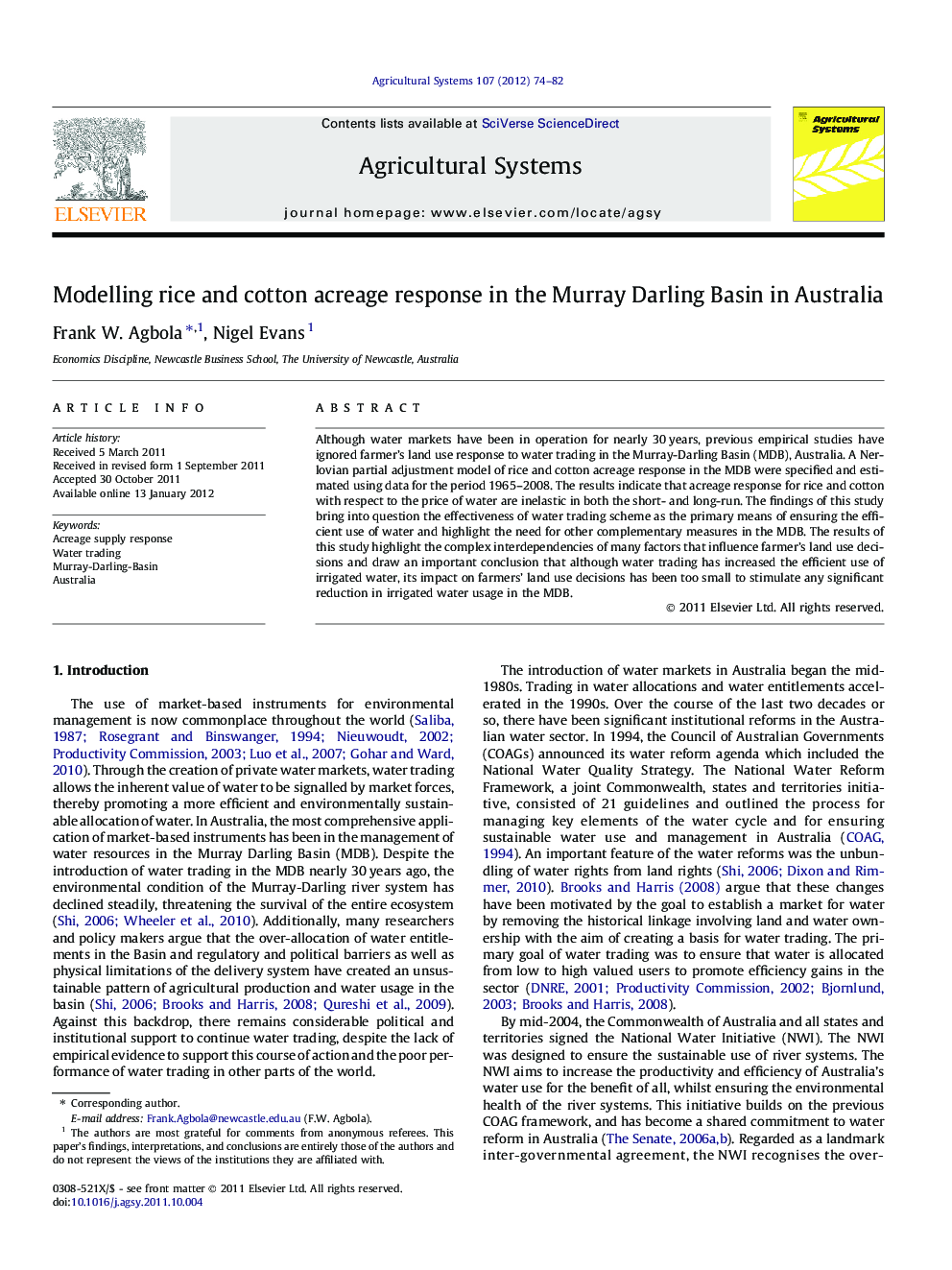| Article ID | Journal | Published Year | Pages | File Type |
|---|---|---|---|---|
| 4491425 | Agricultural Systems | 2012 | 9 Pages |
Although water markets have been in operation for nearly 30 years, previous empirical studies have ignored farmer’s land use response to water trading in the Murray-Darling Basin (MDB), Australia. A Nerlovian partial adjustment model of rice and cotton acreage response in the MDB were specified and estimated using data for the period 1965–2008. The results indicate that acreage response for rice and cotton with respect to the price of water are inelastic in both the short- and long-run. The findings of this study bring into question the effectiveness of water trading scheme as the primary means of ensuring the efficient use of water and highlight the need for other complementary measures in the MDB. The results of this study highlight the complex interdependencies of many factors that influence farmer’s land use decisions and draw an important conclusion that although water trading has increased the efficient use of irrigated water, its impact on farmers’ land use decisions has been too small to stimulate any significant reduction in irrigated water usage in the MDB.
► We model rice and cotton acreage responses in the Murray-Darling Basin in Australia. ► Our focus was on the effect of water price on acreage response. ► Acreage response w.r.t. price of water was inelastic in both the short-and long-run. ► The drivers of acreage responses are own-price and price of competing crops and water.
